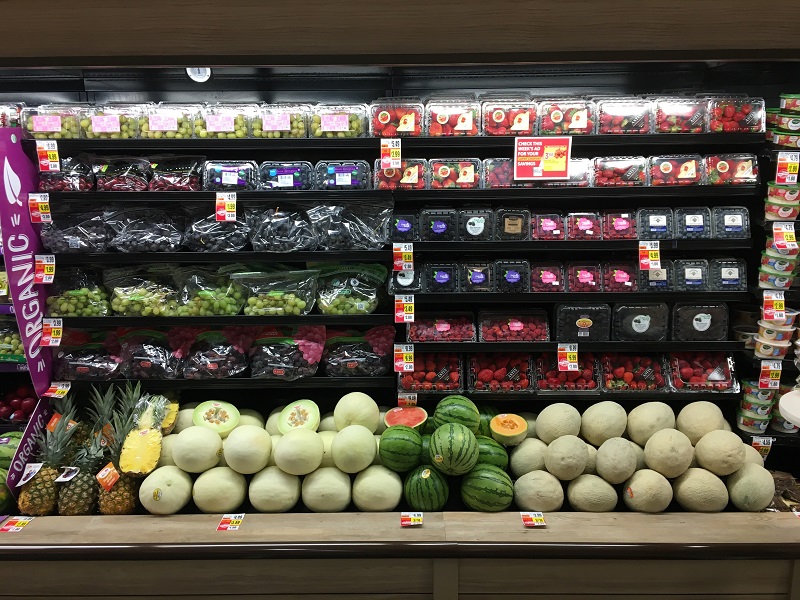Inflation is having a discernible effect on organic produce sales due to a combination of the increasing price of farming inputs, transportation, and storage costs.
After all, the ongoing pandemic is still driving inflation as supply chains grapple with the repercussions of border closures, supply chain disruptions, rising interest rates, and labor shortages. This, in turn, is slowing sales and volume movement.

“Even as the global economy begins to open back up, increased demand on the food supply chain and resulting inflation means that consumers will likely see short-term grocery price increases for the next several months, and produce is no exception,” said Rick Stein, vice president of fresh foods for FMI, The Food Industry Association. “With rising transportation costs and the fact that produce did not experience the same level of inflation as some other categories [meat and seafood], we do expect consumers to see inflation in produce this upcoming year.”

Rick Stein, Vice President, Fresh Foods for The Food Industry Association
Since organic produce is typically higher priced than conventional produce, many consumers are reverting to the purchase of conventional foods to buy more produce and save more money, so the interest and demand that’s been seen in the organic category of late have started to wane.
“With rising transportation costs and the fact that produce did not experience the same level of inflation as some other categories [meat and seafood], we do expect consumers to see inflation in produce this upcoming year.” -Rick Stein
“The pandemic has led to extreme variability in the marketplace,” said Katie Tossie, organic commodity manager for Ocean Mist Farms, a leading grower and marketer of organic produce. “Early in the pandemic, there was little to no predictability as to when highs and lows would occur. However, it does feel as though buying trends are slowly getting back to pre-pandemic behaviors.”
John Savidan, senior director of produce and floral for Gelson’s Markets, has been following closely what’s happening with the organic industry and is starting to see some of the challenges of inflation impact sales at the store level.

Katie Tossie, Organic Commodity Manager, Ocean Mist Farms
“There’s no doubt that we, just like everyone else, are starting to feel some pressure points when it comes to inflation,” he said. “The worst thing when it comes to inflation is that in the end, the customer is more than likely going to be the [one] to unfortunately suffer.”
“Early in the pandemic, there was little to no predictability as to when highs and lows would occur. However, it does feel as though buying trends are slowly getting back to pre-pandemic behaviors.” -Katie Tossie
For many retailers, bearing the costs of inflation is almost impossible, so these are passed on to customers who have to change their spending habits to cope with the situation. Modifying spending habits to cope with current inflation means spending less on expensive items and more on practical products that stretch every dollar.

John Savidan, Senior Director of Produce and Floral, Gelson’s Markets
“COVID and COVID-related daily operating expenses have made it so that retailers cannot just do what they would have done in the past—and that was to absorb some of the extra inflationary costs,” Savidan said. “Our customers are very educated and understand that inflation isn’t [biased], and when it happens, it’s through all areas of retail. No matter what, our customers can feel confident in knowing that our organic items will be of the utmost highest in quality and in stock when other [retailers'] may not be.”
“The worst thing when it comes to inflation is that in the end, the customer is more than likely going to be the [one] to unfortunately suffer.” -John Savidan
Jeff Cady, director of produce and floral at Tops Markets, feels there will be additional inflation during the first part of 2022 affecting both conventional and organic produce, but he expects things to eventually stabilize.
“I do see it leveling off after Q1, specifically due to the industry looping last year’s challenges in terms of labor, transportation, and all the other inputs into the finished goods,” he said. “I can see clearly that transportation costs are starting to match last year, so we hopefully are close to the ceiling.”

Jeff Cady, Director of Produce and Floral, Tops Markets
Money Matters
In the Food Industry Association’s recent Power of Produce analysis, consumers listed price as the most significant attribute influencing their produce purchase decision, which is on par with quality.
“A variety of factors are contributing to elevated food prices in 2022, although the cost of most staples has fallen from their pandemic highs,” Stein said. “The January Consumer Price Index found that five of the six major grocery store food indexes increased.”

According to USDA Economic Research Service, in 2022, food-at-home prices are predicted to increase between 1.5 and 2.5 percent, while food-away-from-home prices, such as those at restaurants, are predicted to increase between 3.5 and 4.5 percent. For grocery overall, average household weekly spending has held steady at $144, which is down from the $161 witnessed at the height of the pandemic.
These are important numbers to consider when looking at how much organic produce is going to make its way into consumers’ hands in 2022.
According to USDA Economic Research Service, in 2022, food-at-home prices are predicted to increase between 1.5 and 2.5 percent, while food-away-from-home prices, such as those at restaurants, are predicted to increase between 3.5 and 4.5 percent.
The need for more promotions from retailers, data-driven strategies, and increased prices will lead to a great reduction in spending on organic produce in the long run. This trend is likely to continue into 2023 with the war in Ukraine further driving up the cost of produce.
Carlos Castelán, managing director of The Navio Group, a retail and grocery consulting firm, notes that while inflation and rising prices for consumers are affecting consumers regardless of whether the grocery products are conventional or organic, it’s the latter that is most likely to feel the impact as time goes on.
“The challenge for any grocer is to remain in stock and price competitive with customers given the continued supply chain snarls and inflationary pressures,” he said. “Over the last year, produce has not risen in price as much as other food categories such as meat, which have higher input costs like grain feed. However, inflation will continue to play a role in the price of produce given the high costs of labor as well as increasing fuel prices, which affect all products.”

Carlos Castelán, Managing Director, The Navio Group
This will remain a challenge for most grocers and beyond many typical measures such as working with suppliers to reduce costs or creating more responsive supply chains.
“We have seen focuses on reducing spoilage via discounting products that may be overstocked helping the overall bottom line, along with passing along a benefit to customers,” Castelán said. “Organic customers understand that prices are higher, but if things continue to be challenging financially for them, this could be one of the first items from their shopping list that has to go.”






